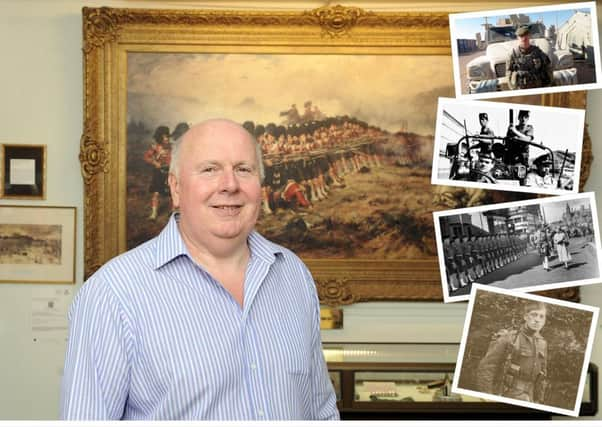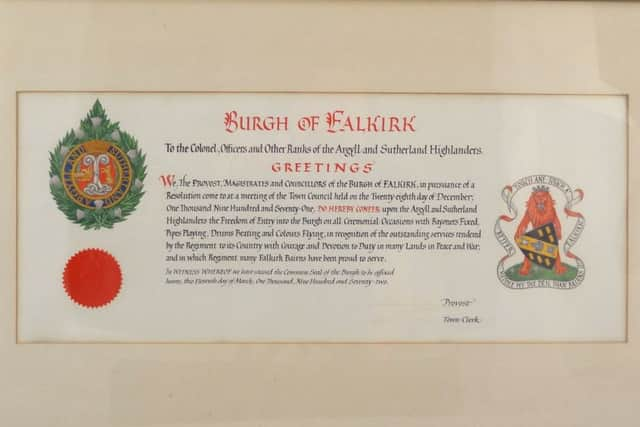The Thin Red Line is once more at the forefront of battle


Since the regiments was formed in 1881 the Forth Valley was one of the main recruiting grounds for the regiment and in the First World War – the Great War – from 1914-1918, it is believed 3045 men from the Falkirk district gave their lives in the fight for freedom.
Of the 1160 soldiers alone from the town of Falkirk alone, almost one third (324) of those sacred souls who perished during the brutal conflict came from the ranks of the Argylls. The regiment was an amalgamation under the Cardwell Reforms of the 91st Argyllshire Highlanders, raised at Stirling Castle in 1794, with the 93rd Sutherland Highlanders, formed at Strathnaver in 1799.
Advertisement
Hide AdAdvertisement
Hide AdOne of the world’s most courageous war stories is associated with the regiment from the 1854 Battle of Balaclava during the Crimean War.


The threadbare British 93rd Highland Regiment held off a supposedly superior Russian Cavalry in what came to be known as the ‘Thin Red Line’ – due to the line of red coats worn by the soldiers – in the town of Balaklava.
One of the Highlanders then climbed atop the town’s church and took the cross which adorned its dome. The concrete symbol of victory sits in the Argyll and Sutherland Highlanders Museum at Stirling Castle today, which museum chief executive Rob Laydon says is to be repatriated back to the Russian port.
The military museum is now on an important mission to raise £2 million for a refurbishment to modernise the facility for generations to come.
Advertisement
Hide AdAdvertisement
Hide AdPart of the drive is also to encourage the public to engage with the Argylls’ history and submit the details and memorabilia of their family members who have served with the regiment to the museum to tell the stories of the soldiers.


Mr Laydon said: “It’s all about the local communities and their history. We are at the early stages of this project, which should start next year, it’s about changing the way people view museums.
“There is a wealth of stories out there that are more about the soldiers than the regiment. What happened to families when their men went to war, what happened to communities, what happened to the children?
“We want to create a social history museum rather than just a museum.”
Prince William leading the charge
Advertisement
Hide AdAdvertisement
Hide AdNamed after The Argylls’ famously steadfast feat of courage at the 1854 Battle of Balaclava, and the iconic painting of that name, the Thin Red Line Appeal aims to raise up to £2 million over this year, to be supplemented with investment in the King’s Old Building in Stirling Castle by Historic Environment Scotland.
The fundraising drive will be under the patronage of HRH The Earl of Strathearn, as Prince William, the Duke of Cambridge is known in Scotland.
Work is now progressing to develop a detailed development plan that will be submitted to the Heritage Lottery Fund later this year and is hoped to lead to the securing of a further £1.1 million from the Lottery. The expected total cost of the redevelopment, to be completed in 2018, is estimated at up to £4 million. Heritage design consultants PLB Ltd have been appointed to lead the renewal of the museum.
Addressing themes such as Empire, the rise and fall of heavy industry, and the changing role of the Scottish soldier from the Highland Clearances to peacekeeping in Northern Ireland, the new museum sets out to use The Argylls’ priceless collection of militaria, artefacts and archives to challenge preconceptions of a regimental museum for a new era.